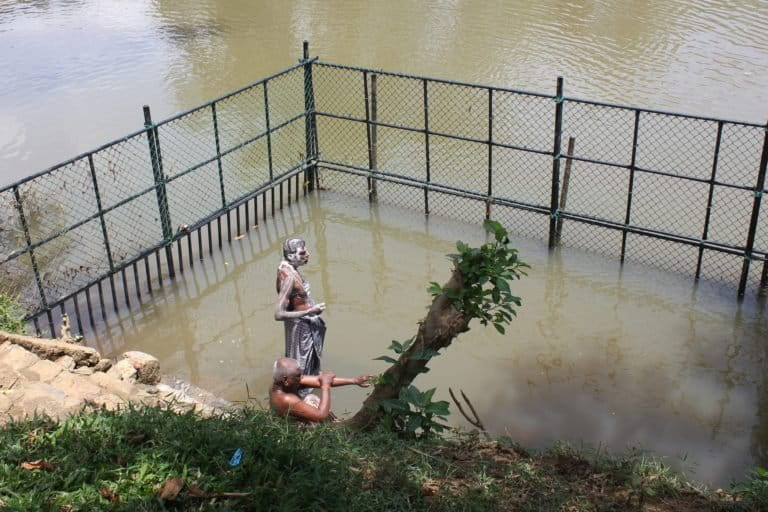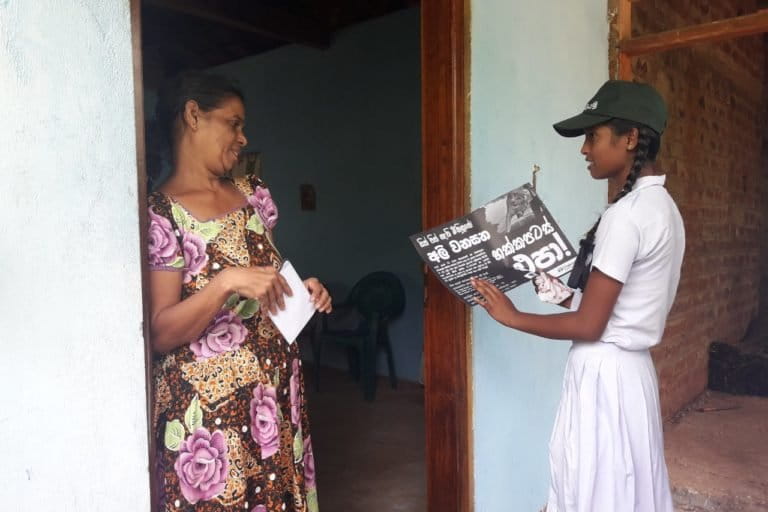- Human-wildlife encounters have increased rapidly in recent years and go beyond elephants and leopards. Competition has grown over the shared space between humans and wildlife due to encroachment, deforestation, habitat degradation, and climate change, putting humans and animals in conflict over land, water and resources.
- Humans often clash with macaques and langurs as the monkeys are attracted by garbage, are being fed or try to find new habitats due to deforestation. Peafowl are emerging as top agricultural pests due to their expanding range and distribution over the last decade.
- Crocodile attacks mainly affect poorer communities that are dependent on unsafe bodies of water, and they often lack awareness of the animals’ behavior.
- There is an urgent need to increase awareness around human-wildlife conflict and crop foraging as well as to employ non-violent mitigation measures that take into account the interests of both humans and animals, including fences, garbage management and habitat conservation.
COLOMBO, Sri Lanka— Human-elephant and human-leopard encounters in Sri Lanka have garnered much attention in recent months and years, and for good reason: More than 14,500 incidents of human-elephant conflict were recorded between 2010 and 2019, along with with 42 deaths attributed to snare-induced injuries.
Elephants and leopards are two of Sri Lanka’s most visible and emblematic animals. But humans share the island with thousands of other species, and there are many dimensions of human-wildlife conflict and coexistence.
An escalating issue
“Human-wildlife conflict has increased rapidly in recent years,” said Tharaka Prasad, director of Wildlife Health at the Department of Wildlife Conservation (DWC). Conflicts between humans and animals have become more frequent and more intense, and the causes are clear.
“Interactions between humans and wild animals have taken place throughout history,” said Deepani Jayantha, a veterinarian, conservationist and country representative of the plight of the Asian elephant.
“Now, the expansion of the human population and crop cultivation, deforestation, habitat degradation, reduced predator pressure, and climate change are making the common space more competitive.”
Sri Lanka is home to a wealth of biodiversity and contains a vast number of species with each playing essential roles in their ecosystems. These animals hold significant environmental, cultural, religious, symbolic and even economic value that transcends Sri Lanka’s borders. For example, some are major attractions for tourists. However, from monkeys to peafowl and from crocodiles to wild boars, many species increasingly find themselves at odds with humans over land, resources, and water, leading to conflict and sometimes violent clashes.

Humans and monkeys
Four species of non-human primates — the toque macaque, the gray langur, the purple-faced langur and the slender loris — live in Sri Lanka, but it is the macaques and langurs that are most frequently considered pests by humans. Similar to the general human-wildlife situation, encounters with monkeys have increased, said Wolfgang Dittus, director of the Smithsonian Primate Biology Program. “As humans have encroached more on wildlife areas, monkey populations have increased at local hotspots where people feed monkeys, either purposefully or indirectly with food scraps littering the environment.”
When not foraging on their natural forest foods, macaques may supplement their diet by raiding crops, fruits, and vegetables, breaking into houses in search of food, or going through garbage. Langurs, in contrast, are canopy dwellers that do not tend to make close contact with humans but can still be considered a problem when they raid home gardens and damage roofs.
Besides population increase and habitat loss driving them toward human settlements, langurs are sometimes also raised as pets, which “is a practice that should be avoided completely,” Jayantha said. “People generally raise them when they are young and cute. When they get older, and the owners can no longer control them, they let them go feral and become a nuisance to the public.”

Humans and birds
In a recently published study among farmers in southern Sri Lanka, crop foraging by peafowl, other birds and large mammals was identified as a major issue, and farmers estimated their crop losses to be significant.
Peacocks, in particular, have become a growing problem and are now one of the top agricultural pests in Sri Lanka. They can cause severe damage to cultivation, a traditional farming practice in Sri Lanka and home gardens as they enter fields in small flocks. Their range and distribution have expanded dramatically over the last decade due to climate change and reduced predator pressure, impacting agriculture across nearly the entire country.

Humans and crocodiles
Sri Lanka has two species of crocodiles, but only the saltwater crocodile is known to attack, kill and eat humans. Additionally, crocodiles get caught in fishing nets, and more than a hundred are killed each year by humans.
“The number of crocodile attacks per year is around 10 to 15, with one-third being fatal,” said Dinal Samarasinghe, herpetologist, Wildlife Research and Conservation Foundation.
“The prevalence right now is mainly across the east coast of Sri Lanka and the Southern province,” he said. “It is correlated with the poverty levels of human communities and the use of natural water sources. These communities use the water bodies for their daily water needs, which makes them highly prone to crocodile attacks.”

Humans and other wildlife
In addition to the animals mentioned above, wild boars, giant squirrels and porcupines are among the species that impact the agriculture sector. Wild boars are found throughout the island and are especially damaging to vegetable farms in the highland areas. Giant squirrels can be a danger to coconut plantations and home gardens, and porcupines feed on tubers, shoots, and young plants.
In a 2019 survey that Jayantha carried out around the Udawalawe National Park, “other vertebrate wildlife” was named among the top four causes of crop damage reported for vegetables, fruits, pulses, and perennials over the last five years.

Conflict and coexistence
Despite the scale and widespread nature of crop foraging, there is comparatively little research on it in Sri Lanka. Farmers that have received training from the government or other organizations overwhelmingly had not been trained to mitigate human-wildlife conflict and crop foraging.
The DWC receives complaints from all over the country on the different dimensions of human-wildlife conflict. “Some people expect the DWC to chase wild animals from their agricultural lands, but the role of the department is to conserve the wildlife outside and inside protected areas,” Prasad said.
If the DWC does not remove animals, farmers are prone to take matters into their own hands. Air rifles and firecrackers are used to chase animals away. Extensive mesh networks can protect crops from peacocks, and non-electric wires sometimes keep out boars and porcupines. If that is not enough, farmers sometimes employ more violent means: snares and other traps, electric wires, poison, gunshots, or explosives implanted in crops like cucumbers locally known as hakka patas.
Poaching is also common and seems to have increased during the COVID-19 lockdown. “People who cannot engage in their jobs due to the lockdown shift back to their old trades,” Prasad said. “They catch bushmeat for their consumption as well as for income generation.”
“The Fauna and Flora Protection Ordinance has all necessary provisions regarding wildlife protection,” Prasad said. It is the central piece of legislation regarding wildlife in Sri Lanka, and most animals listed above are protected by it. However, enforcement can be difficult, and some species, such as toque macaques, wild boars, and giant squirrels, are not protected by the law.

Solving human-wildlife conflict
“The silver lining to the COVID-19-related travel restrictions is the fact that natural areas are less impacted by visitors,” Dittus said. “Monkeys, for example, can no longer rely on tourist handouts and actually return to the jungle to make a living on natural foods.”
This shift leads back to the core problems, human encroachment and lack of awareness. “Some farmers tolerate the monkeys. Nearly all complain, often without good reason or understanding of why monkeys visit them,” Dittus said. “The farmers are unwilling or lack knowledge to take preventative actions or reflect on how their behavior might trigger human-monkey conflict.”
Samarasinghe shares this sentiment regarding human-crocodile conflict. “It is really important for people living close to rivers and canals to recognize that crocodiles and other animals inhabit these ecosystems as well,” he said. “That way, conflict can be prevented in the long term.”
“Humans need to understand that this problem involves them as well,” says Jayantha. “We need to increase awareness, for example, by establishing an island-wide database on the topic, developing apps, and getting citizen support to help farmers and others find better solutions tailored to the species and locations.”
Monkeys can be kept away by managing garbage and not feeding them. Conflict with crocodiles can be avoided by using alternative water sources, spreading awareness, and putting up exclusion enclosures, fences, and signposts. There are many ways to address conflict with certain species in specific locations. Still, when people implement specific tactics, they should always consider the underlying causes, aim to conserve natural habitats and take into account the needs of both humans and wildlife.
Banner image of a saltwater crocodile resting on a fallen tree branch, courtesy of Dinal Samarasinghe.
"conflict" - Google News
July 22, 2020 at 02:36PM
https://ift.tt/2WLW1eK
Sri Lanka: Rich in biodiversity, and human-wildlife conflict - Mongabay.com
"conflict" - Google News
https://ift.tt/3bZ36xX
https://ift.tt/3aYn0I8
Bagikan Berita Ini














0 Response to "Sri Lanka: Rich in biodiversity, and human-wildlife conflict - Mongabay.com"
Post a Comment